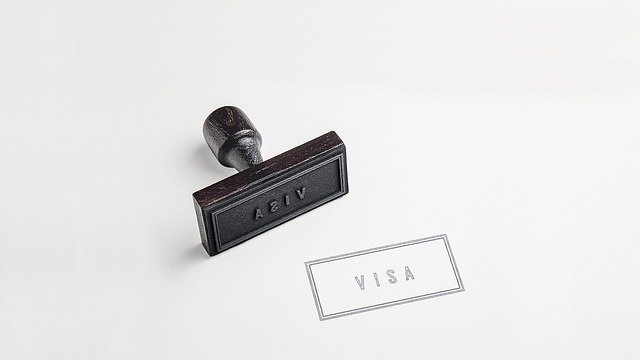Understanding Car Deals: A Guide to Display and Demonstration Models
When shopping for a vehicle, many buyers overlook the potential savings available through demonstration and display models at dealerships. These vehicles, which have been used for test drives or showroom presentations, often come with significant discounts compared to brand-new inventory. Understanding how these deals work and what to look for can help you make an informed decision while potentially saving thousands of dollars on your next vehicle purchase.

What Are Demonstration Vehicles and How Do They Work?
Demonstration vehicles are cars that dealerships use for test drives, loaner programs, or temporary staff transportation. These vehicles typically have low mileage, ranging from a few hundred to several thousand miles, and are maintained according to manufacturer standards. While they’re technically considered used once titled, they often retain most factory warranties and come with the latest features and technology. Dealerships regularly rotate these vehicles out of their demonstration fleet to make room for newer models, creating opportunities for buyers to purchase nearly-new cars at reduced prices. The savings can range from 10% to 30% off the manufacturer’s suggested retail price, depending on mileage, condition, and how long the vehicle has been in service.
Showcase Cars: What Makes Them Different from Regular Inventory?
Showcase cars are vehicles specifically selected for display in dealership showrooms or at auto shows and special events. These models are chosen to highlight new features, design updates, or popular trim levels that manufacturers want to promote. Unlike demonstration vehicles that accumulate mileage through test drives, showcase cars typically have minimal to zero miles but may have been handled by numerous potential customers during showroom visits. They serve as the physical representation of what’s available for order and help buyers visualize options, colors, and features before making a purchase decision. Once a new model year arrives or promotional periods end, dealerships often offer these showcase vehicles at discounted rates to clear space for incoming inventory.
Exhibit Vehicles from Current Collections: Understanding Dealership Inventory
Exhibit vehicles represent a broader category of cars that dealerships display as part of their current collection. These may include demonstration models, showcase cars, or vehicles used in marketing campaigns and promotional events. Dealerships maintain these vehicles in excellent condition, as they serve as the first impression for potential buyers exploring specific makes and models. The advantage of purchasing an exhibit vehicle lies in the combination of near-new condition, full knowledge of the vehicle’s history since it remained with the dealership, and the opportunity to negotiate favorable pricing. Many exhibit vehicles come with additional perks such as complimentary maintenance packages or extended warranties to make them more attractive to buyers.
Display Models: Evaluating Featured Designs and Specifications
Display models serve as the tangible examples of vehicle designs, allowing customers to experience the look, feel, and features of a car before committing to a purchase. These vehicles showcase everything from exterior color options and wheel designs to interior materials and technology interfaces. When considering a display model for purchase, buyers should thoroughly inspect the vehicle for any wear from customer handling, ensure all features function properly, and verify that the vehicle hasn’t been modified from factory specifications. Display models often include premium features and packages that dealers use to demonstrate the full potential of a vehicle line, which means buyers might access higher trim levels at more accessible price points.
Pricing Considerations for Demonstration and Display Vehicles
When evaluating the cost of demonstration and display vehicles, several factors influence the final price. Mileage is a primary consideration, with lower-mileage demonstration vehicles commanding higher prices than those with several thousand miles. The vehicle’s age, even if only a few months old, affects depreciation and pricing. Market demand for specific models also plays a role, as popular vehicles may see smaller discounts while slower-selling models offer greater savings opportunities.
| Vehicle Type | Typical Mileage | Average Discount | Key Considerations |
|---|---|---|---|
| Demonstration Vehicle | 500-5000 miles | 10-20% off MSRP | Full warranty coverage, service history available |
| Showcase Car | 0-500 miles | 8-15% off MSRP | Minimal use, potential for cosmetic wear from handling |
| Exhibit Vehicle | 0-3000 miles | 12-25% off MSRP | May include promotional packages, varies by event usage |
| Display Model | 0-1000 miles | 10-18% off MSRP | Premium features often included, inspect for showroom wear |
Prices, rates, or cost estimates mentioned in this article are based on the latest available information but may change over time. Independent research is advised before making financial decisions.
Key Factors to Consider Before Purchasing
Before committing to a demonstration or display vehicle, buyers should request a complete vehicle history report to verify all service records and confirm no accidents or damage occurred while in dealership possession. Inspect the vehicle thoroughly for any cosmetic issues, interior wear, or mechanical concerns that might have resulted from multiple test drives or showroom traffic. Verify that the manufacturer’s warranty remains fully intact and understand what coverage transfers to you as the new owner. Compare the discounted price against similar new and used vehicles in your market to ensure you’re receiving genuine value. Finally, negotiate additional benefits such as free maintenance, extended warranties, or upgraded features to maximize the value of your purchase.
Making an Informed Decision
Purchasing a demonstration or display vehicle can offer substantial savings while providing a nearly-new car with modern features and remaining warranty coverage. These vehicles represent a middle ground between buying new and purchasing a used car from an unknown source. The key to a successful purchase lies in thorough research, careful inspection, and understanding exactly what you’re buying. By asking the right questions about the vehicle’s history, verifying its condition, and negotiating effectively, buyers can secure excellent deals on quality vehicles that meet their needs and budget. Whether you choose a demonstration vehicle with low mileage or a showcase car fresh from the showroom floor, these options provide valuable alternatives to traditional new car purchases.




